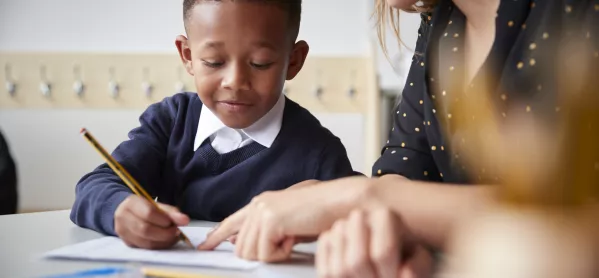The proportion of pupils reaching the expected standard in writing at key stage 1 has seen a significant fall since before the pandemic, research suggests.
The proportion fell from 70 per cent in 2019 to 59 per cent in 2022, according to an FFT Education Datalab study.
In reading, the percentage of pupils achieving this standard fell from 76 per cent to 68 per cent and in maths it dropped from 77 per cent to 70 per cent.
The findings come as headline results for key stage 2 Sats are being released today.
Year 2 pupils taking the KS1 assessments this year would have had the whole of this key stage disrupted by Covid.
Statistician Dave Thomson said that “given that context”, it is “unsurprising” that the attainment of the KS1 cohort was lower compared with previous years.
FFT used data from teacher assessments in reading, writing and maths in 2019 and 2022 from 620 schools.
Measuring the disadvantage gap
In order to measure the disadvantage gap at KS1 this year, FFT collected data from 1,100 schools.
The tests in reading and maths form part of the evidence that teachers used to arrive at teacher assessments for those subjects.
Not all pupils take the tests - only those pupils working above the pre-key stage standards are expected to take them.
Overall, a fifth (20 per cent) of disadvantaged pupils achieved a score of 87 or lower in reading.
And FFT analysis shows that the median scores of disadvantaged pupils are lower than other pupils by 3 points in maths and 4 points in reading.
Disadvantaged pupils are those who have ever been classified as being eligible for free school meals since Reception.
Mr Thomson did not compare this disadvantage gap to previous years.
Lower attainment ‘unsurprising’
While Mr Thomson said that the results were “unsurprising” following the pandemic, he did say that “in retrospect”, the differences perhaps were not “as large as might have been feared”.
This year’s Year 2 pupils will be sitting key stage 2 Sats in 2026 and Mr Thomson said that the government’s target that 90 per cent of pupils will achieve the expected standard in reading, writing and maths by 2030 “now seems even further away”.
The 2030 target was first announced in the Levelling Up White Paper in February, a big increase on the 2019 figures in which around two-thirds (65 per cent) of pupils met all three standards.




